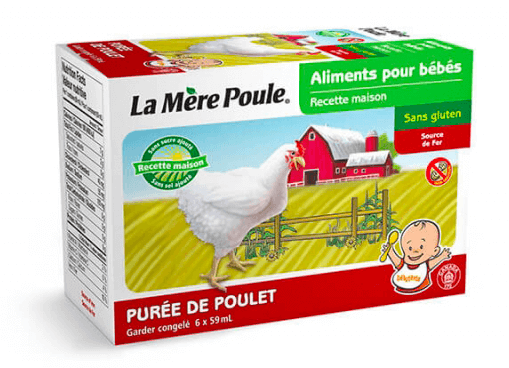Is your baby about 6 months old and you’re now thinking about introducing them to solid foods? When you’re alone in front of the baby food products, do you know which ones to buy or how to choose them? Here are some tips on the best baby foods as well as those to avoid.
The introduction of food
First of all, you should introduce new foods gradually in order to monitor your child's tolerance to it. In fact, you should introduce only one new type of food at a time and space the introduction of additional new foods two to three days apart to ensure that your baby doesn’t have an allergic reaction or intolerance.
Here are some important details to know, depending on the food category.
Cereals fortified with iron
Cereals are often the first foods offered to babies because of their iron fortification, their taste and their smooth texture. It’s best to start with cereals that contain only one kind of grain. For example barley, rice or oats are excellent choices, but they must be sugar free! So read the list of ingredients on the product packaging carefully, because sugar can also have other names, like dextrose, maltose, sucrose, invert sugar, polymers of glucose, fructose, syrup or honey. The absence of sugar enables the child to develop a taste for natural food.
Meat and substitutes
Meat, poultry, fish, legumes, tofu and eggs are foods rich in protein, iron and zinc. These can be provided as a smooth, commercial puree formula and are often accepted well by babies who are beginning to eat solids. On the other hand, others will prefer thicker purees with tender meat mashed with a fork or meat cut into small pieces.
In addition, some mashed meats contain salt, thickening agents and preservatives, especially those which are mixed with vegetables. So, take the time to read the list of ingredients carefully and remember that the fewer ingredients there are, the more natural the product is and, therefore, is a better choice for your baby. For example, Mother Hen chicken purée available at Familiprix has a very good list of ingredients, is a good source of iron and is gluten-free certified.

Fruits and vegetables
Fruit and vegetable purees are products rich in vitamins and minerals, and they come in a wide variety of flavours for toddlers. They are sometimes added to cereal to create a nourishing combination for the baby.
Make sure that the purees you choose have no added sugar and salt. If you can afford it, choose organic products.
Rice rusks for babies
Small rusks made from rice are a good choice of nutritious snack for toddlers. It's best to go for products with a short ingredient list and those with little or no added fat, sugar, or salt. These snack foods are often made from whole grains and are therefore high in iron and zinc. Warning! Some snacks made with puffed rice in the shape of small stars or flowers should not be given to children before the age of 8 months, as they can stick to the palate and present a risk of choking.
Finally, companies that manufacture food products for infants and young children make a point of offering healthy formulas with quality ingredients. Many products have short ingredient lists and great nutritional values. Just take the time to compare them well! Finalement, les compagnies qui préparent des produits alimentaires destinés aux nourrissons et aux jeunes enfants se font un devoir d’offrir des formules saines avec des ingrédients de qualité. De nombreux produits affichent de courtes listes d’ingrédients et de belles valeurs nutritives. Prenez tout simplement le temps de bien les comparer!
Familiprix in collaboration with Hubert Cormier
References
Association québécoise des orthophonistes et audiologistes (AQOA). Dysphagie. Québec. En ligne : https://aqoa.qc.ca/dysphagie-2/
INSPQ. (2020). Mieux vivre avec notre enfant de la grossesse à deux ans : Alimentation. Québec. En ligne : https://www.inspq.qc.ca/mieux-vivre/alimentation
Santé Canada. La nutrition du nourrisson né à terme et en santé : Recommandations pour l’enfant âgé de 6 à 24 mois. Énoncé conjoint de Santé Canada, de la Société canadienne de pédiatrie, des Diététistes du Canada et du Comité canadien pour l’allaitement, janvier 2015. En ligne : www.hc-sc.gc.ca
Santé Canada. (2020). Avis de modification visant à ajouter des concentrations maximales pour l’arsenic inorganique dans le riz poli (blanc) et le riz décortiqué (brun) à la partie 2 de la Liste des contaminants et des autres substances adultérantes dans les aliments. En ligne : https://www.canada.ca/fr/sante-canada/services/aliments-nutrition/participation-public-partenariats/modification-concentrations-maximales-arsenic-inorganique.html
